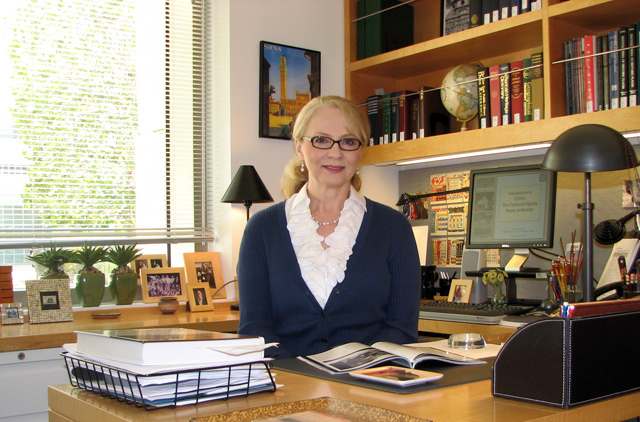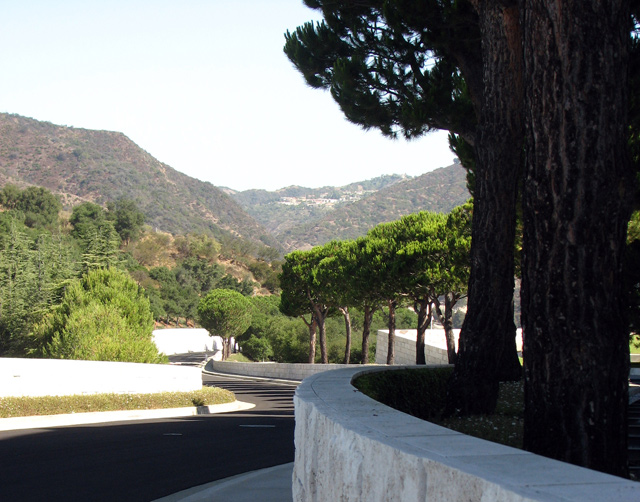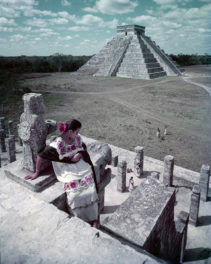
What do you do at the Getty?
I manage the Getty Vocabulary Program.
You probably want to know what that is! We compile databases of terminology that allow people to catalog art and to retrieve information about it. I’ve worked on vocabularies for the Getty since 1985.
What databases are in the Vocabulary Program?
We produce four vocabularies. The Art & Architecture Thesaurus (AAT) is the oldest and perhaps the most famous one. It’s been covered in university library schools for many years, and it’s often cited as a model of best practice for how to build a thesaurus according to national and international standards.
We also produce the Union List of Artist Names (ULAN) and the Getty Thesaurus of Geographic Names (TGN), and we’re developing a new vocabulary that will be introduced to contributors in 2011. It’s called the Cultural Objects Name Authority (CONA), and it will collect the titles and names of works of art and architecture, such as the Mona Lisa or Empire State Building.
What else goes into managing the Vocabulary Program?
We also work on standards advising people how to catalog art works in museums, art libraries, archives, visual resources collections, and such. We’ve published the Categories for the Description of Works of Art (CDWA)—I was co-editor with Murtha Baca of the Getty. I also co-edited Cataloging Cultural Objects (CCO), which was published by the American Library Association in print form. But most of our vocabularies and standards are published online because they’re so huge; they really can’t be published in book form.
I, and sometimes the other editors, give presentations and conduct training workshops at conferences throughout the year. The training materials are very extensive, and are available on our Web site. I also write the editorial rules and informational Web pages for the Getty vocabularies. I just wrote a book that was published earlier this year, Introduction to Controlled Vocabularies: Terminology for Art, Architecture, and Other Cultural Works. It’s apparently being used as a textbook in some library schools, among its other uses. But I always like to take time out to do actual editorial work in the databases myself, when I have time.
Are these vocabularies used at other institutions beyond the Getty?
Yes. They’re licensed by institutions and businesses that build cataloging systems—both not-for-profits such as universities and museums and for-profit companies that use them in cataloging and retrieval systems. For example, Gallery Systems, whose TMS software is used by the Museum and the GRI, licenses the Getty vocabularies. Their users then have access to the vocabularies when they’re cataloging works of art.
How do you create a vocabulary system?
We have a very small staff, so we rely on contributions from the user community to create the Getty vocabularies.
For example, if a museum or a visual resources collection has a large set of artists’ names that they’d like to use for retrieval and indexing, they contribute it to the Union List of Artist Names and it becomes a part of the bigger product.
One of our current goals is to find contributors who have good quality data that will help increase the number of languages and cultures represented in these vocabularies. We guide contributors in mapping their data to our standard import format. Much of our daily work involves incorporating that contributed data and making sure it meets our standards.
But you asked how we create a vocabulary “system.” There are nine or more custom systems in place that allow us to import data, do our editorial work, clean up data, and publish the data. These systems were built and are maintained by dedicated people in Getty ITS departments, including talented software architects and software engineers.
What kinds of people contribute to the vocabularies?
Our contributors are typically from Getty projects (at the Getty Research Institute, Museum, and Getty Conservation Institute) or outside institutions or consortia that collect artworks or information about art and architecture. While curators and scholars occasionally contribute directly, we primarily receive the contributions from the people who serve the information needs of those curators. For example, people at a registrar’s office who have to accumulate artists’ names, people who help organize information for exhibitions or publications, people who catalog books, articles, and visual resources, people in information services who need to retrieve art information, and so on.
Occasionally we also get e-mails from scholars or members of the public who say, “Hey, you should add such-and-such as a variant name for this archaeological site, because it was also known by this name in a given period.” We’re happy to add these names.
What is the editing process like?
We process contributions, edit information, and do research on artists, geographic places, art terms, and works of art and architecture. Some of the processing tasks may be repetitive, but the research component of the job makes it interesting.
What does it take to be a vocabulary editor?
To be a vocabulary editor, it takes a person who enjoys focused research; most of our editors have had an advanced degree, either in art or architectural history or in a related field. Many also have a degree in library science. Knowledge of at least one foreign language is also important. They have to be comfortable using technology.
However, for the type of work we do, it’s more important that the editor has the personality to enjoy small research projects, to carefully follow detailed rules, and to produce a specified number of records in a designated time. While we don’t have frequent firm deadlines like other publication professions, we do aim to meet weekly quotas and have regular publication dates throughout the year.
How deep does your research have to go to make sure everything is accurate?
It depends on the initial accuracy and thoroughness of the contribution. It also depends on whether information for the concept for AAT—person, artwork, or geographic plac—is complex or simple, and whether the record is deemed very important for art history or of peripheral importance. For example, for a record on Florence, Italy, or Vincent van Gogh, we’d spend considerable time making sure we’ve done comprehensive research and listed all the pertinent variant names, etc. But for many other records, we only have time to make sure that the minimal data from our contributors is consistent and correct.So the amount of research required is very different for different records, and it’s balanced against production goals.
Our task is somewhat easier now than it was ten years ago. Now we can do a lot of our research online, which makes things go faster—in the 1980s and 1990s, we had to look up information in books in the library. Now we continue to consult printed books and journal articles, but we can also search for certain information online, for example in Encyclopedia Britannica and Grove Art Online. That really helps.
Is it more difficult to work with artists’ names and artwork titles that aren’t in English?
It’s difficult in that it requires editors to have some knowledge of foreign languages. However, it’s more important that the editor understands how foreign languages work than to know 60 different foreign languages. Our terms and names may be in any language.
When we need additional help with foreign languages, we rely on experts. We go to someone else at the Getty, or someone in another institution for assistance in translations. An important primary focus for our work now is to increase the number of non-English terms and names. We’re working with several institutions in adding terms and names in other languages. For example, the AAT is being translated into Spanish, Dutch, German, and Chinese, and we already have partial translations in French and Italian.
How did you become interested in this field?
I have a PhD in art history. I went to Syracuse University and Indiana University; I majored in Italian Renaissance and medieval art history. I published a catalogue raisonné on the 14th-century Sienese artist Bartolo di Fredi. A catalogue raisonné requires standardization of information and terms, and strict organization of the material. While doing that research, I realized that I have a love for details (some might say “trivia”) and research. It’s the same type of work that I do now: investigating artists and art works and associated terminology.
What was your first job?
My first professional job was at the National Gallery of Art in Washington, D.C., where I worked in the Prints and Drawings Department. Among the projects I worked on was cataloging Rembrandt watermarks found on National Gallery prints and drawings. This involved creating terms for the watermark types and categorizing them.
How did you end up working at the Getty?
At that time the National Gallery was involved in two Getty projects; one involved investigating overlap between various museums’ cataloging practices, which until then hadn’t been truly documented. Another project involved developing standards for cataloging architectural drawings. Based on my other work, people at the National Gallery who were involved in these projects thought I’d have an aptitude for the comparison and documentation of cataloging—so they asked me to take part. That’s how I first came to work for the Getty. I worked first as a representative of the National Gallery, and then was hired by the Getty.

View from Getty Research Institute to the sea
When the Getty projects at the National Gallery wound down, I was hired by the Vocabulary Program and moved to California. We had offices in Santa Monica at that time, before the Getty Center was completed. The Getty Villa couldn’t accommodate all the staff, so many Getty staff occupied offices in Santa Monica on Fourth Street. I had a beautiful sea view from my window. I used to be able to go shopping at lunchtime. (Laughs.) But it definitely wasn’t comparable to working at the Getty Center, which is much nicer!

View of the path down the hill at the Getty Center
What’s your favorite view at the Getty Center?
While all the views I encounter within the Getty are stunning, due to Meier’s perfect architecture, I actually have two favorite views from the Getty Center. One is from the courtyard in front of the GRI where I work now, looking out in the direction of the ocean. On a clear, arid day, you can see all the way to the sea, to where I began my work with the Getty Vocabularies in Santa Monica, and also nearby, where the Villa is located. It reminds me of my first days in the Vocabulary Program, and the extraordinary work we’ve accomplished in the meantime.
My second favorite views from the Getty are the glimpses of nature I see when walking down the hill after work in the evening: the play of light and varied colors on the trees, a deer gazing from the shadows, hawks and crows soaring, finches flitting about, little lizards scampering across the trail, huge beetles waddling about.
That’s a calming experience at the end of the day, as I organize in my mind the thousands of little details we attended to that day in our vocabulary work, and I mentally prepare for the tasks and steps for the next day on the road to accomplish our long-term goals.

A young male mule deer on the Getty Center hillside




Comments on this post are now closed.
Trackbacks/Pingbacks